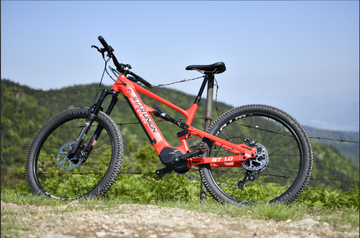Top Tips for Adjusting Hydraulic Disc Brakes to Optimize Braking Performance
by YunaLi on Apr 19, 2025

When it comes to cycling safety and control, your hydraulic disc brakes play a critical role. Whether you're a road rider or a mountain biker, properly adjusting your hydraulic brakes can significantly improve your stopping power and ensure a smooth, responsive ride. In this article, we'll cover essential tips to fine-tune your hydraulic disc brakes for maximum performance and longevity.
Why Is Adjusting Hydraulic Disc Brakes So Important?
Hydraulic disc brakes offer better modulation and stronger braking force compared to mechanical systems. However, poor setup—such as misaligned calipers, worn-out brake pads, or air in the system—can reduce braking efficiency or even lead to failure.
That's why regular inspection and proper adjustment are key to optimal braking.

Top 6 Tips to Improve Your Hydraulic Disc Brake Performance
1. Adjust Brake Lever Reach
Use a small hex key (usually 2.5mm or 3mm) to bring the brake lever closer to the handlebar. Your finger should rest naturally on the lever and be able to engage the brakes without overextending.
SEO keywords: brake lever adjustment, reach setting, cycling comfort
2. Center the Caliper
Misaligned calipers can cause rubbing or uneven braking. Loosen the caliper mounting bolts, squeeze the brake lever to center the caliper, then re-tighten. For fine-tuning, use thin shims if needed.
SEO keywords: caliper alignment, brake noise, rotor rubbing
3. Check Brake Pad Wear
Inspect your brake pads regularly—replace them if there's less than 1mm of material left. Worn pads decrease braking power and can damage the rotor. Choose resin or metallic pads depending on your riding style.
SEO keywords: brake pad replacement, pad types, disc brake maintenance
4. Bleed the Brake System
If your brake lever feels "spongy", air may have entered the system. Use a proper bleed kit to remove air and refill with the correct fluid (e.g., mineral oil for Shimano, DOT fluid for SRAM).
SEO keywords: hydraulic brake bleed, brake fluid refill, soft brake feel
5. Bed In New Brakes
New pads and rotors must be properly bedded in to achieve full braking potential. Perform 10–20 controlled slow-downs from medium to low speed to build up an even friction layer.
SEO keywords: brake bedding-in, new brake setup, improved braking
6. Avoid Contaminating Pads and Rotors
Oils or cleaning sprays can contaminate your braking surface and drastically reduce performance. Clean your hands before handling, and use disc brake-specific cleaners.
SEO keywords: disc brake contamination, brake noise fix, braking issues

Conclusion: Ride Safe with Responsive Brakes
A well-adjusted hydraulic braking system ensures not just safety, but also confidence and control on every ride. Follow these tips to maintain peak performance and stay ready for any terrain or emergency stop.
Looking for top-quality brake pads, maintenance kits, or bike tools?



